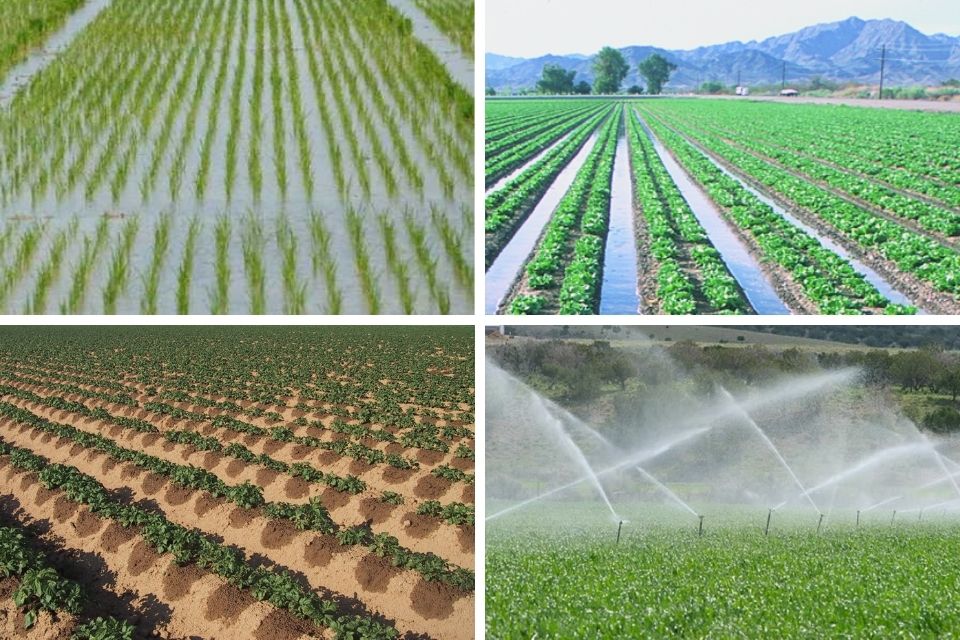Anyone who grows a garden knows that irrigating is something that must be done regularly. The question is: how will you go about doing it? There are different methods of irrigation to irrigate your land, depending on what you are growing.
If you grow a small garden or have a large plot of land for more abundant food crops, you might want to read on. When you read through this, you will have a good idea of what needs to be done to give your land the water it needs. And once you have a consistent schedule of irrigating your land, you’ll see many benefits out of the entire deal.
Let’s dive right in and begin.
Why Irrigate your Land?
The core reason is simple enough, of course. Your land will need plenty of water to look good and be in healthy shape. Water is one of the things your crops or grass need to stay alive.
The brownish, disgusting-looking grass does not look too good. It might even drive down your land value if you intend to sell it in the future. Plus, if you are growing fruits and vegetables, irrigating them will ensure that they will grow to their full potential.
What irrigation method Will you Use?

We’ll be taking a closer look at two main types of irrigation:
- Traditional irrigation method
- Modern irrigation method
Traditional irrigation method
Flood irrigation method
Flood irrigation has been around since the ancient years. The Greeks, the Chinese, the Romans, etc., have utilized this form of irrigation to grow their crops. The water is delivered to the field via a ditch, a water pipe, or a similar source where water flow is present.
Flood irrigation is a very effective way to water your crops. However, it is not the best choice when it comes to water efficiency. If you are looking to use a significant amount of water and have no plans to conserve, flood systems might be a good way to irrigate your crops (assuming you can afford to get it done).
Furrows irrigation method
Furrow irrigation uses small parallel channels that run along the length of the field. They are usually in the direction of a predominant slope. The water is applied at the top of this slope and will work its way down with none other than good old fashioned gravity.
One of the best reasons why furrow irrigation is a great option is the amount of water efficiency you can get out of it. You can save up to 60 percent water every year you utilize this method. So if water conservation is a must, consider the idea of using furrow irrigation.
Modern irrigation method
Drip irrigation method
In the Drip irrigation system, water supplies to plant roots through a collection of plastic pipes, lateral tubes, and valves. These components, controlled with the help of a dripper and water pumps. With the help drip irrigation system, it is easy to provide liquid fertilizer to plant root systems.
Sprinklers irrigation method
Sprinklers are great for irrigation and can even save you water, regardless of the size of land you are using. Home gardens can mostly use small sprinklers, but larger sprinklers with plenty of coverage will need to be used if you have several lands to irrigate.
One of the best things about this method is that it can be automated on a timer. You can set the time to where the sprinkler system can turn on every single day. Plus, you can allow it to run for a certain amount of time.
Though it is affordable and easy to set up, upkeep costs may run a little higher than expected. If you have the cash on hand, you may consider the idea of using this kind of irrigation system for your land.
Which is Better?
It’s time to answer the million-dollar question: which irrigation system is better?
It depends on some factors. For example, which method will save you the most water? If you are looking to save water, then Drip irrigation and Sprinklers irrigation will be your best option. If you want something low cost and easy method when water is no issue, then Furrows irrigation will be good.
My favorite irrigation method is Drip irrigation and Sprinklers irrigation. Both of these methods are great since they can provide you with better chances to save water. The more water you save, the better the options you’ll use more water for future crop irrigation.




Very good training